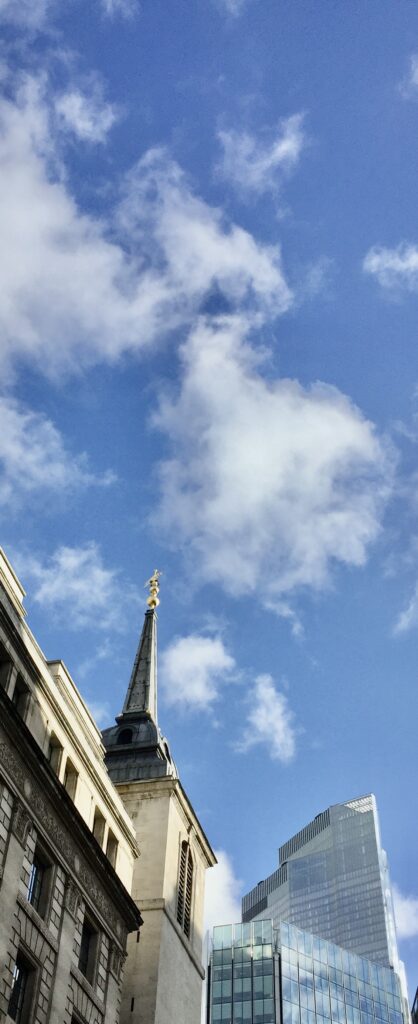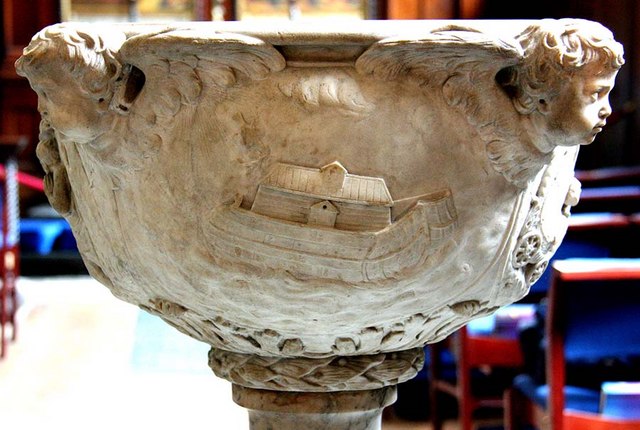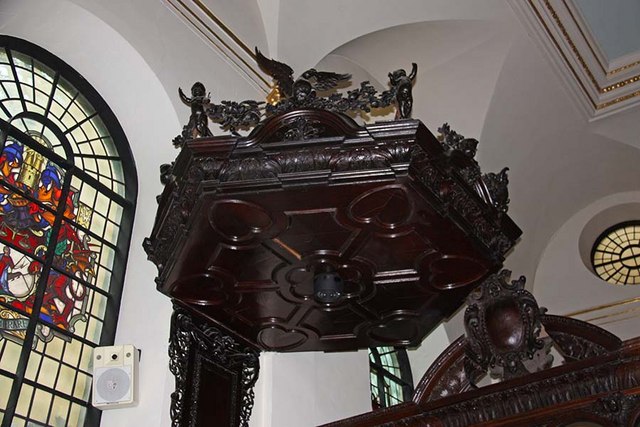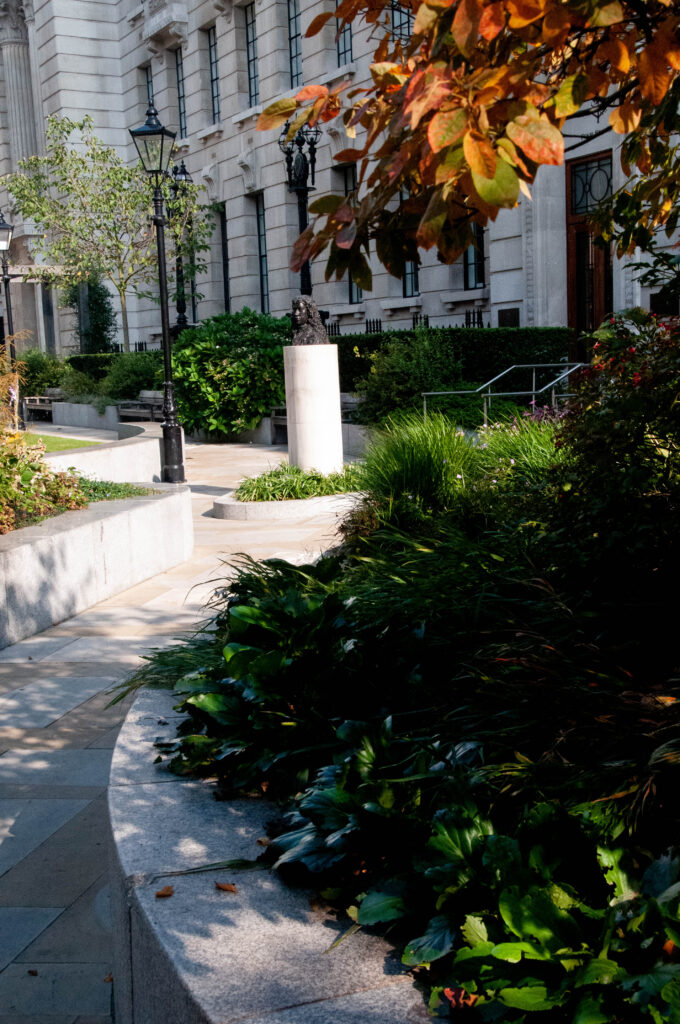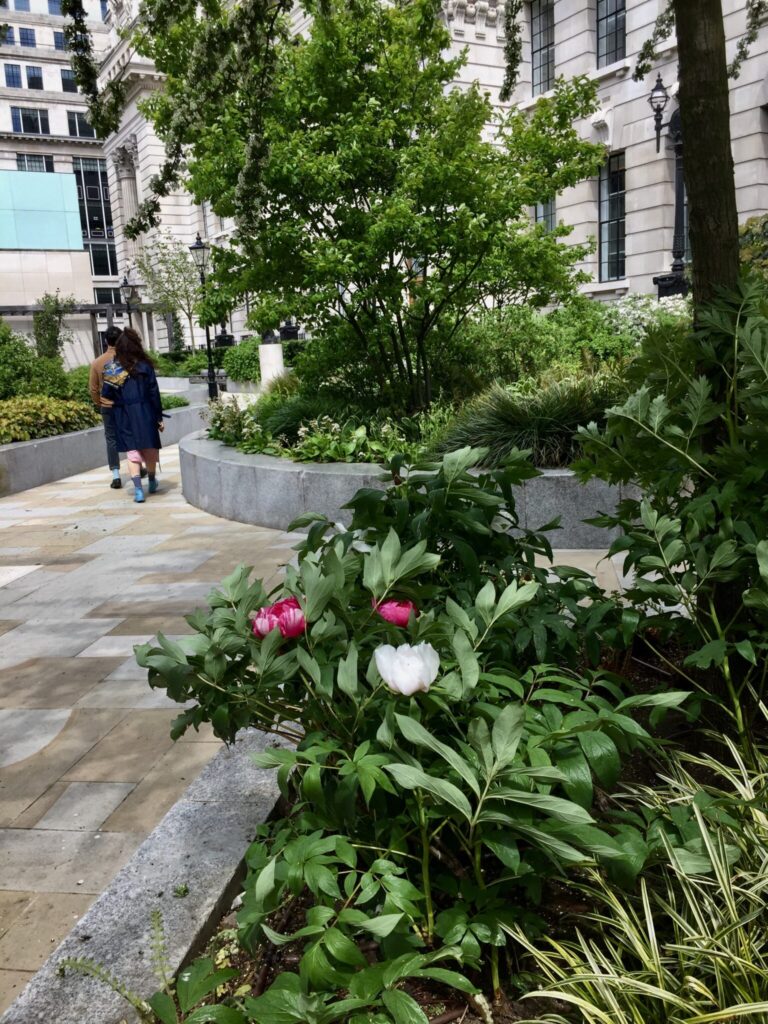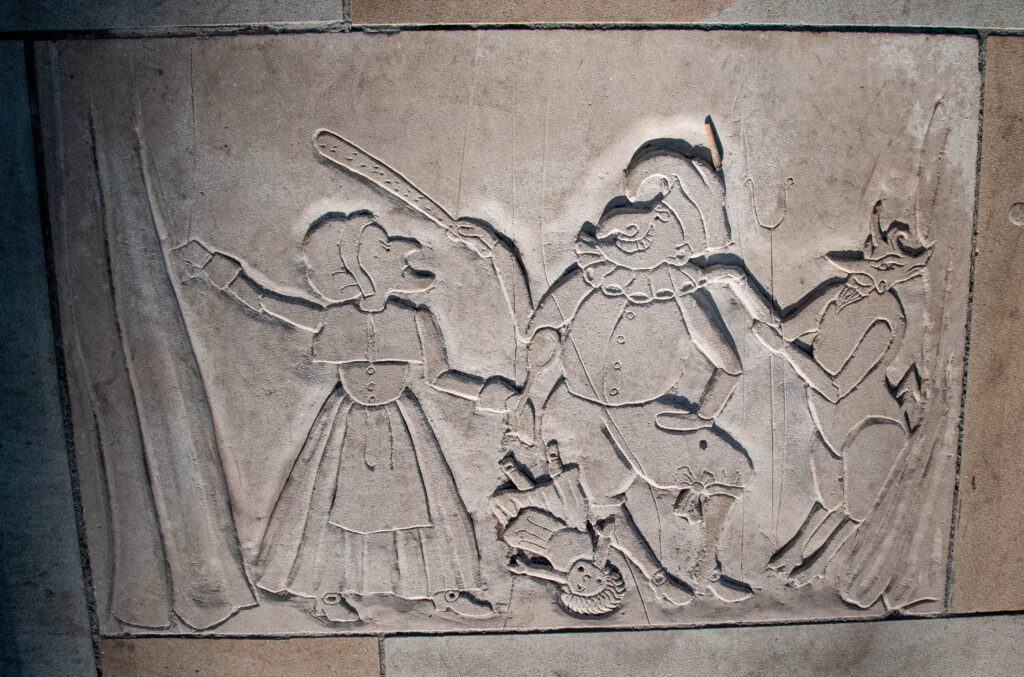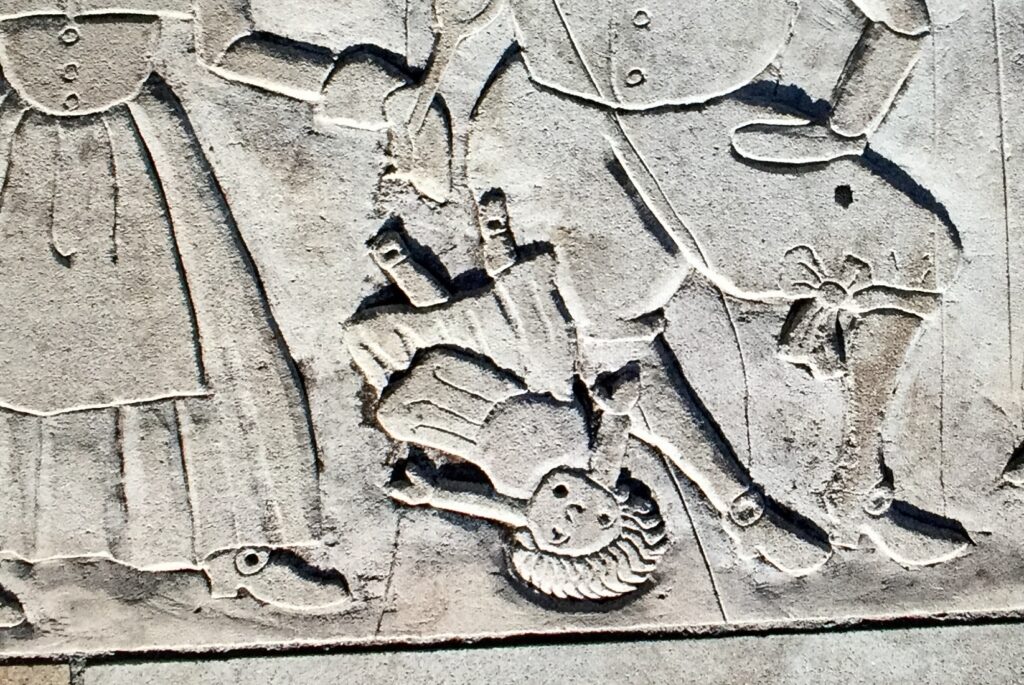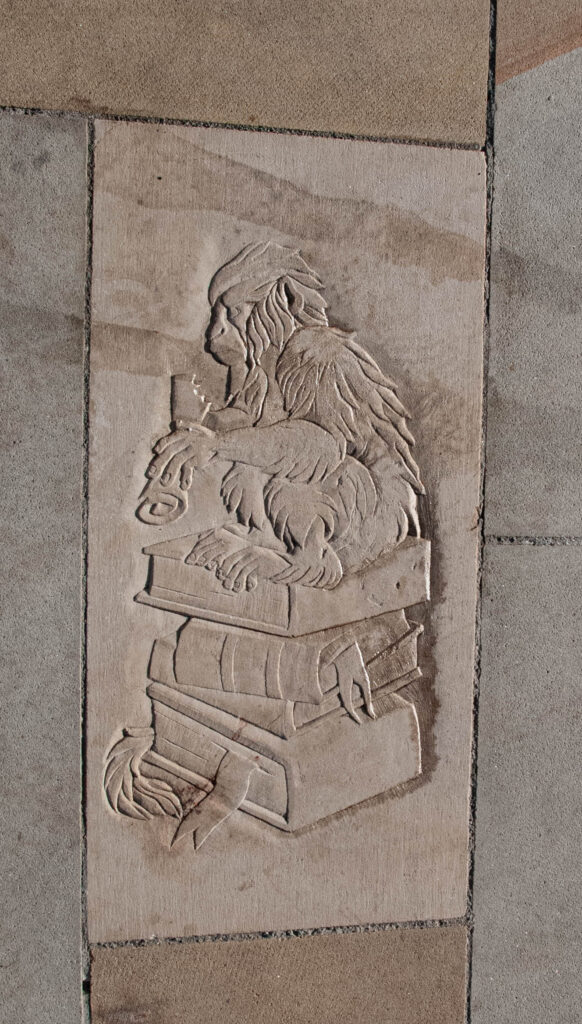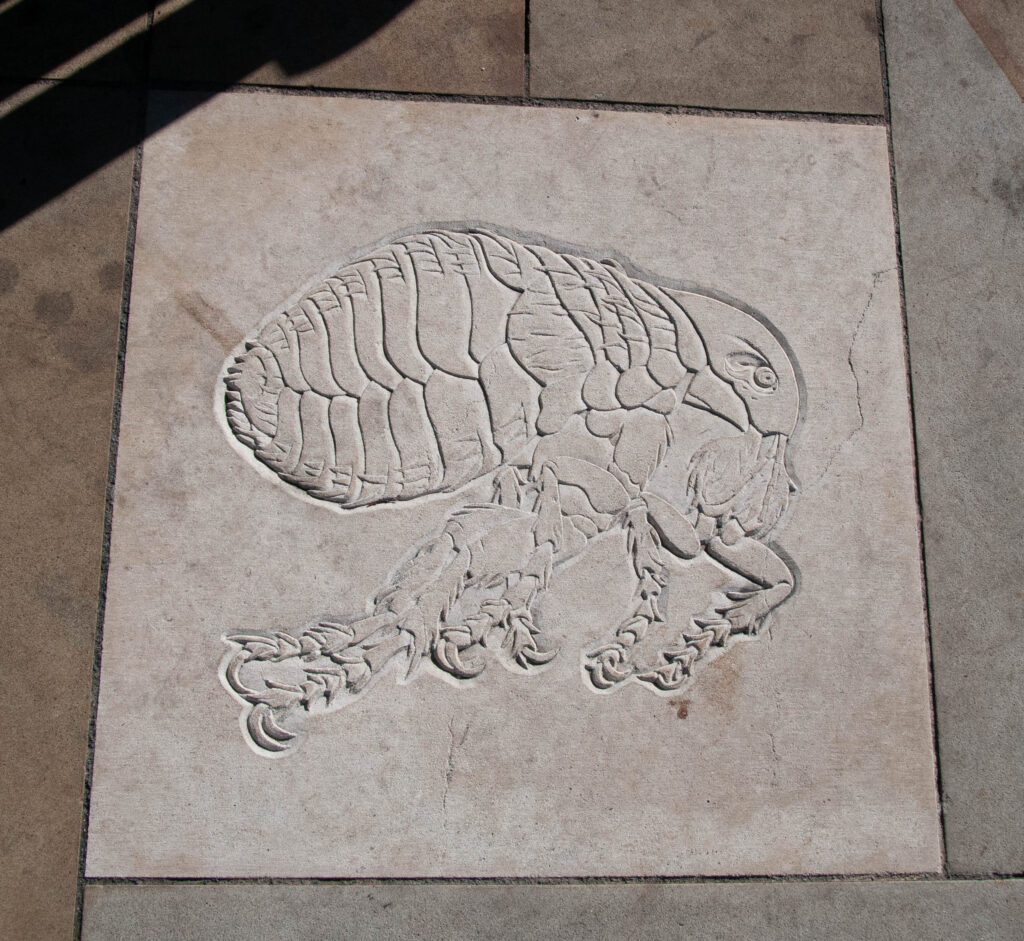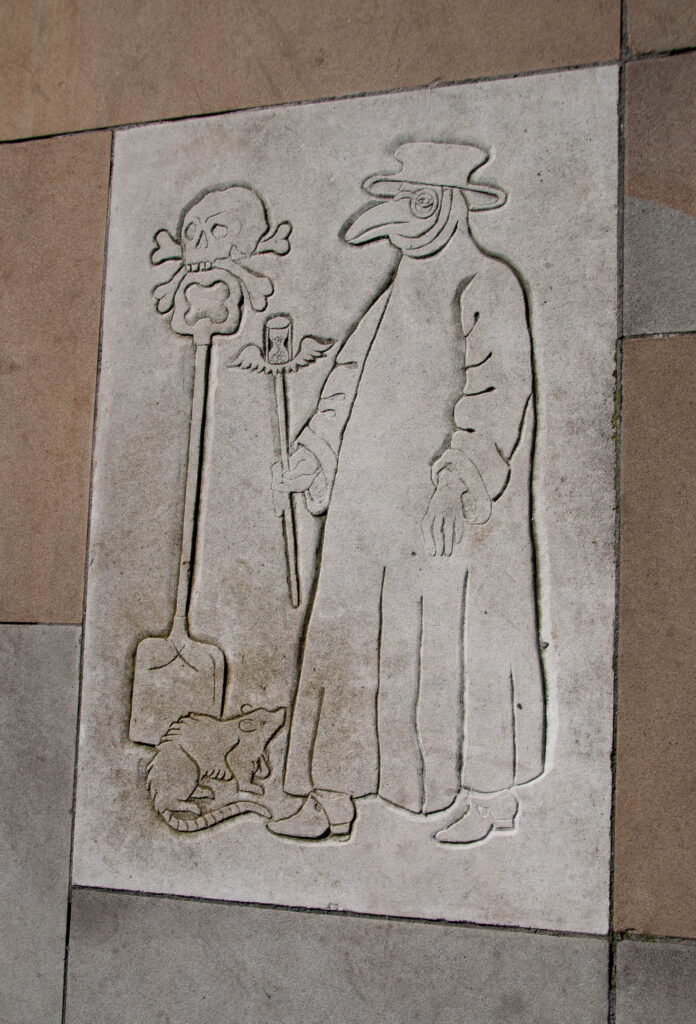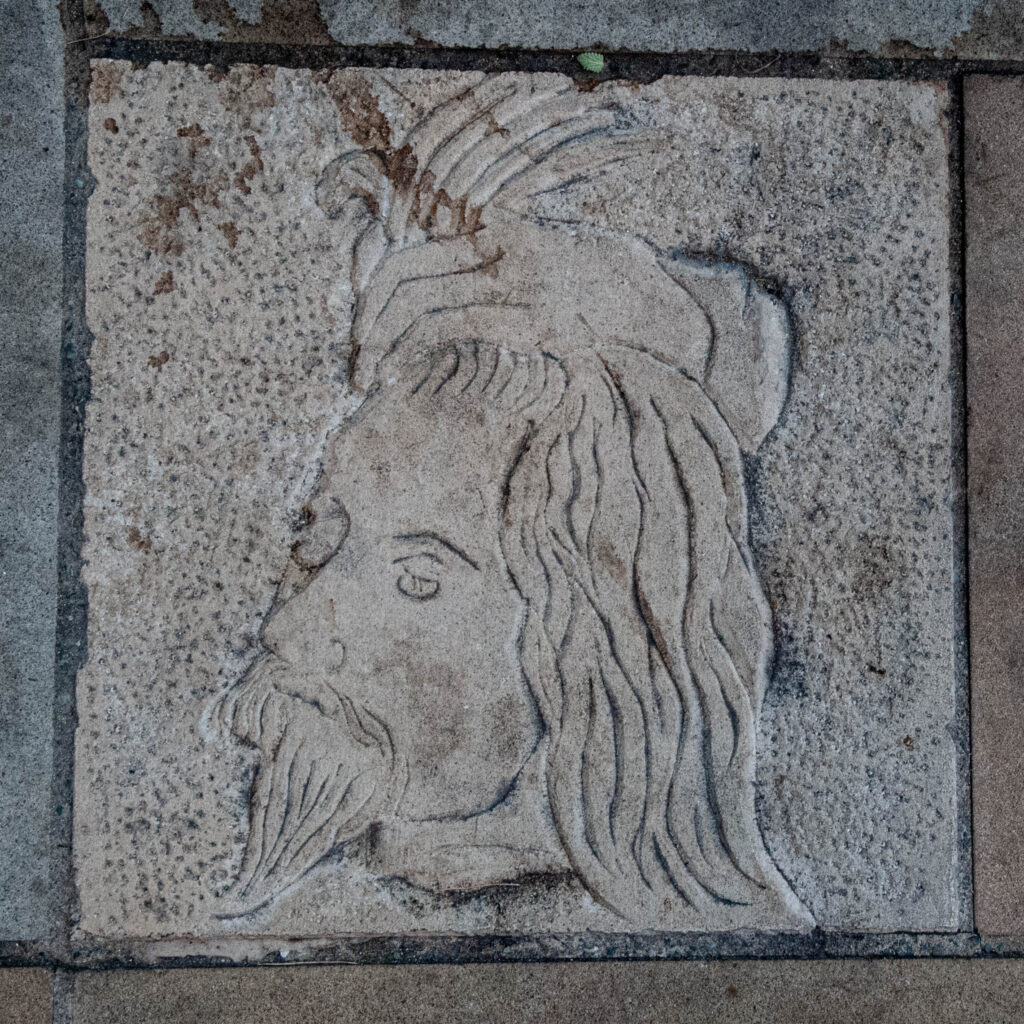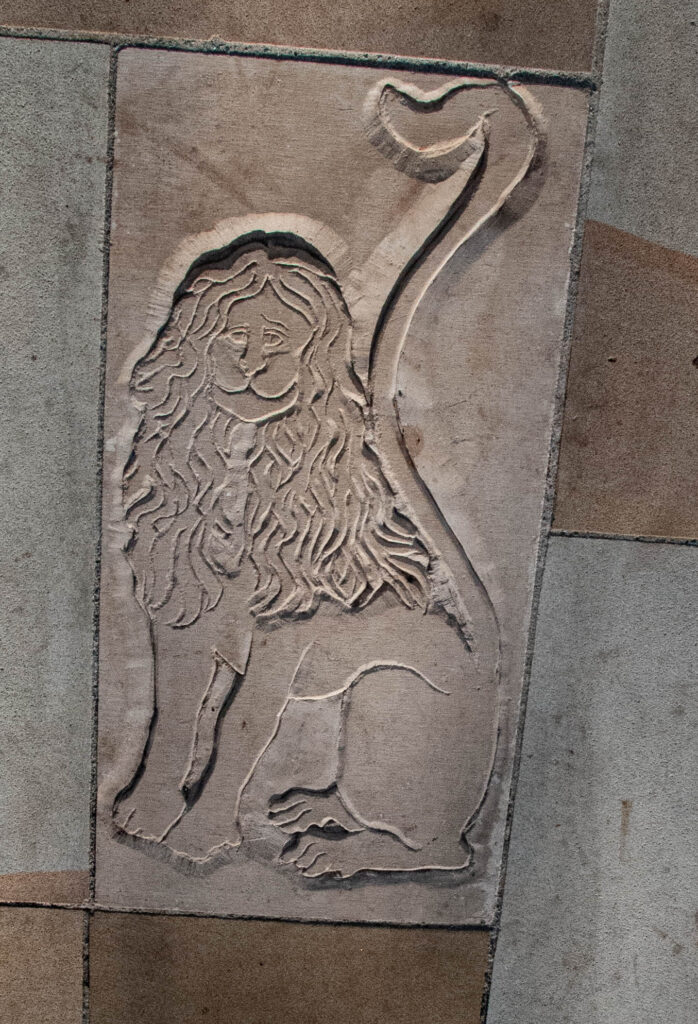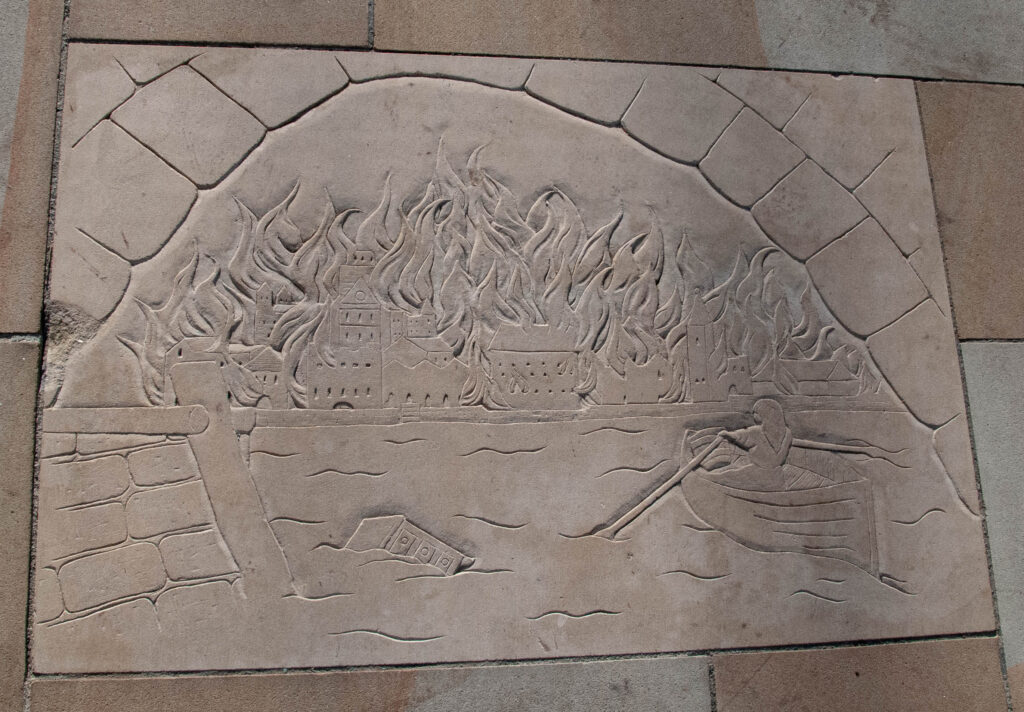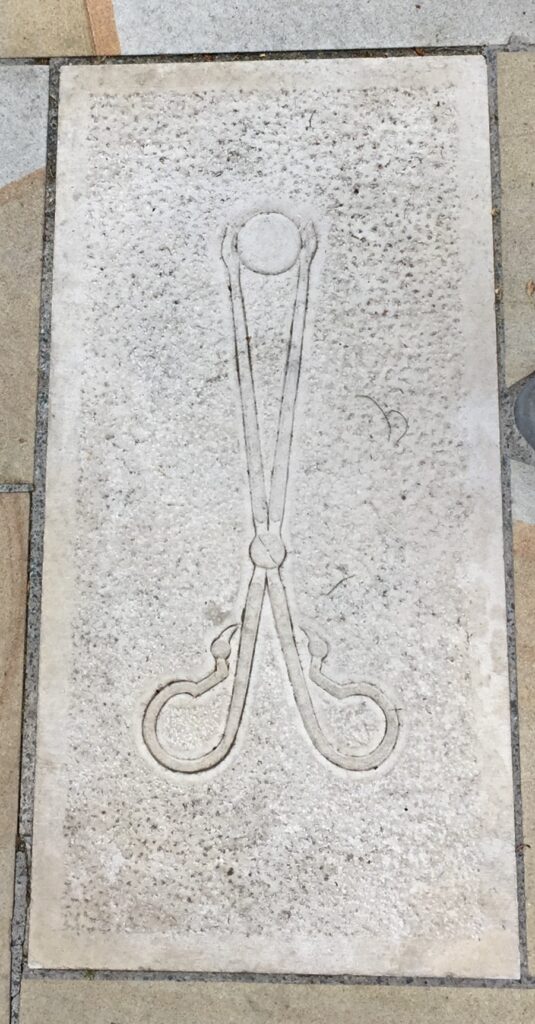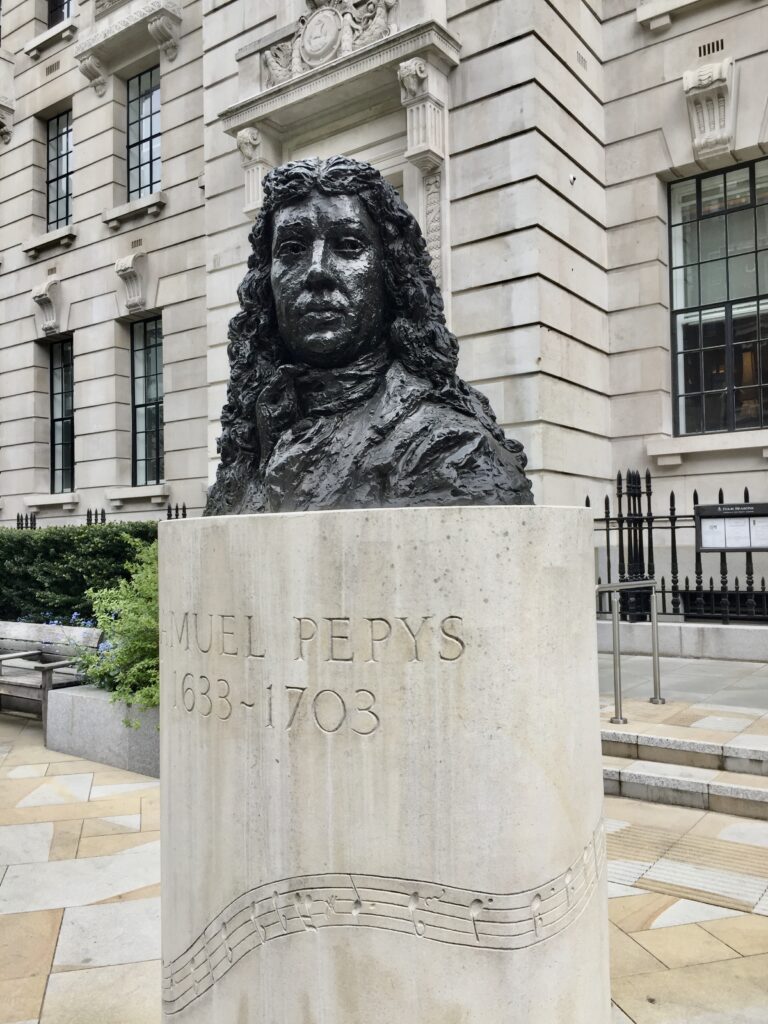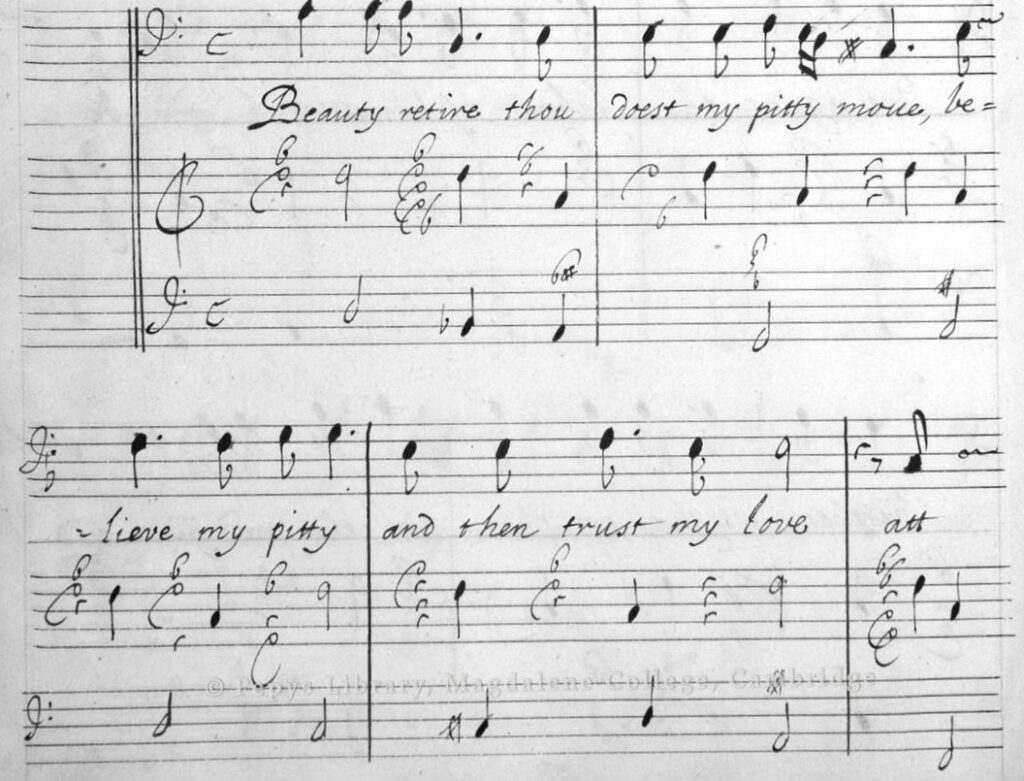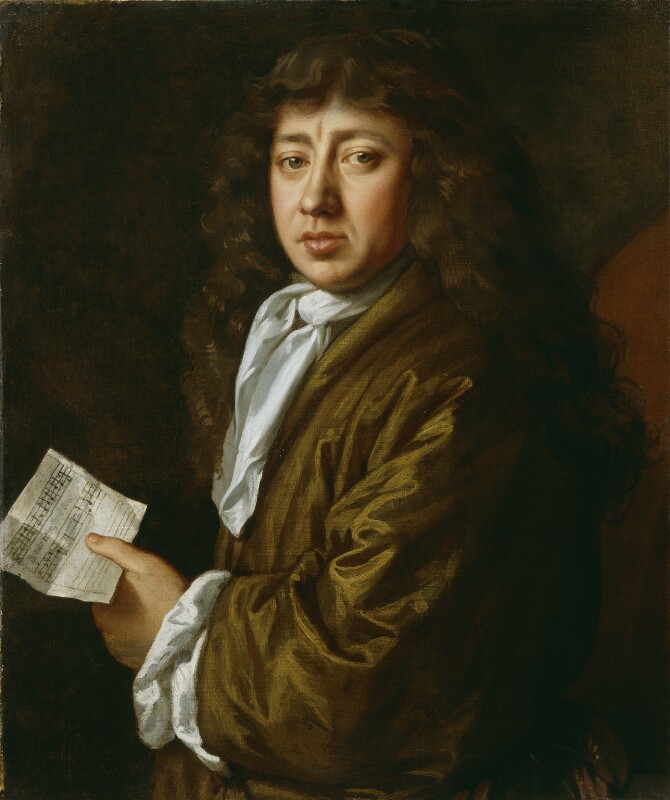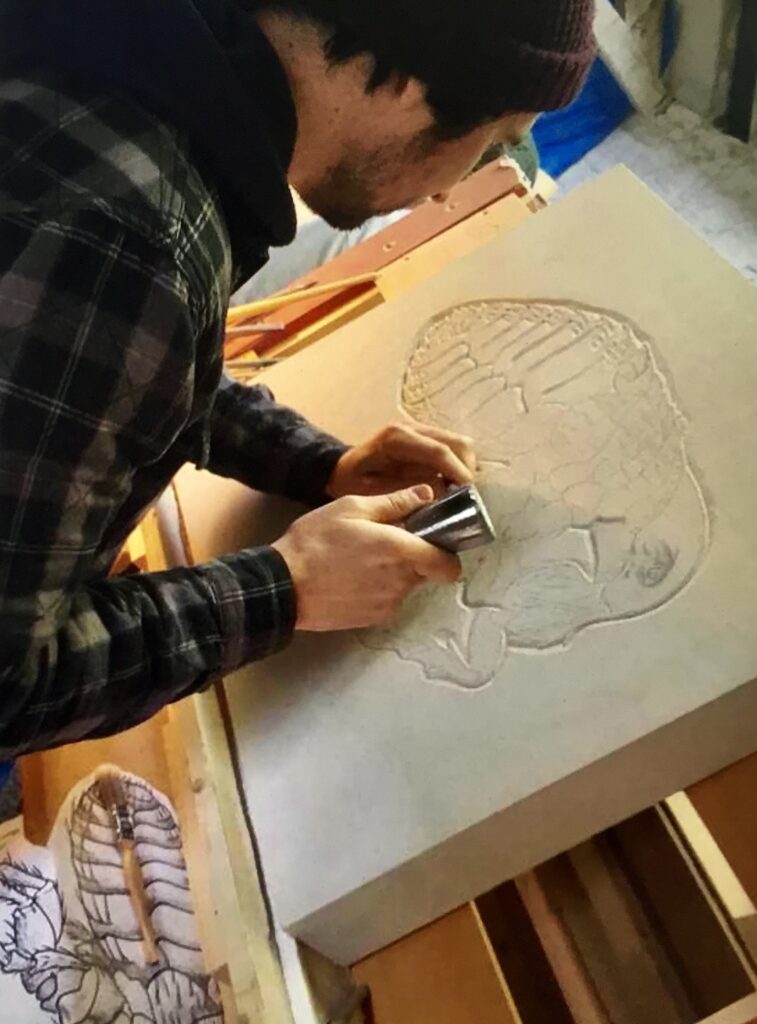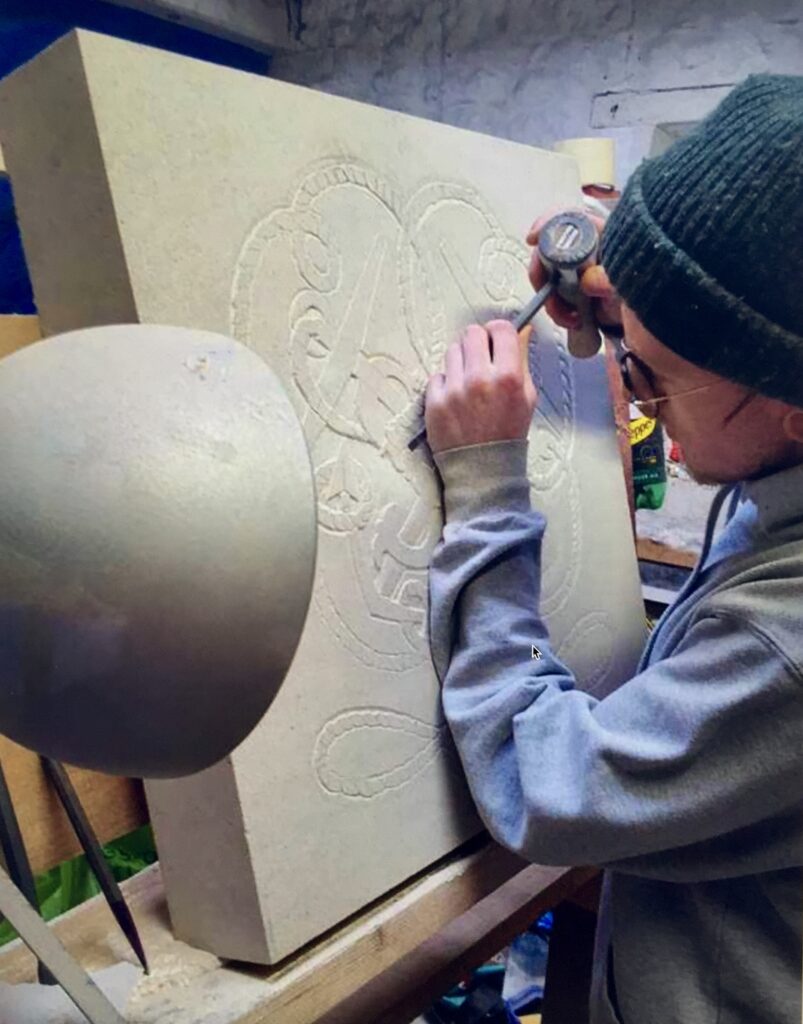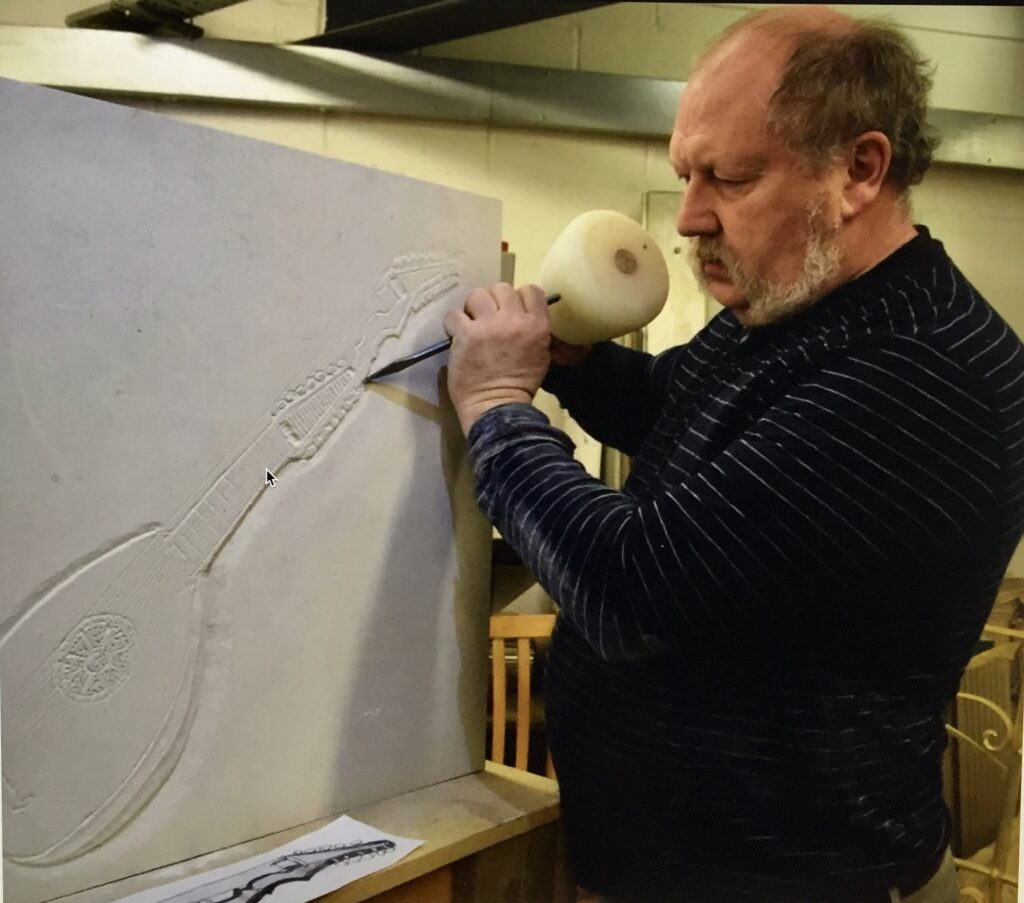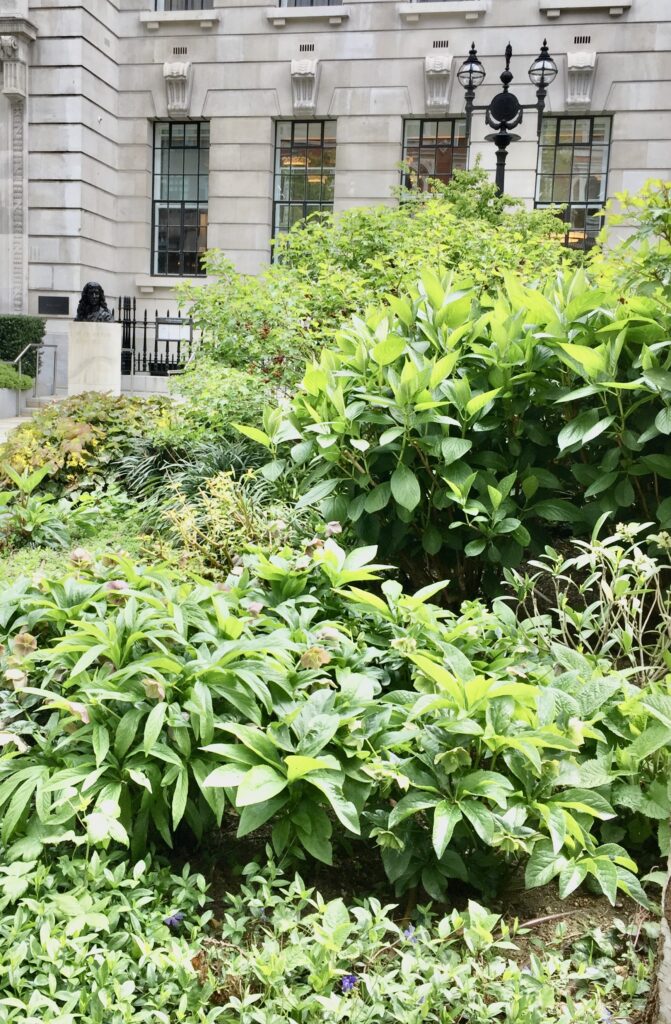A lovely Sunny day last Saturday tempted me out for a walk.
The national Submarine Memorial Memorial on Victoria Embankment (EC4Y 0HJ) is, I think, one of London’s most moving.
Although able to hide when submerged, once struck the vessels were often unable to rise to the surface and became effectively underwater coffins. In the First World War fifty four boats were lost and with them the lives of 138 officers and 1,225 men. At the inauguration in 1922 Rear Admiral Sinclair, the Chief of the Submarine Service, reminded those present that, during the Great War …
The number of those killed in the Submarine Service was greater in proportion to its size than any other branch of His Majesty’s fighting forces … one third of the total personnel.
In November 1959 new panels commemorating Second World war losses were unveiled by Rear Admiral B W Taylor.
Wright and Moore, writing for the 20th Century Architecture website, describe the memorial as a complex mixture of narrative and symbolism …
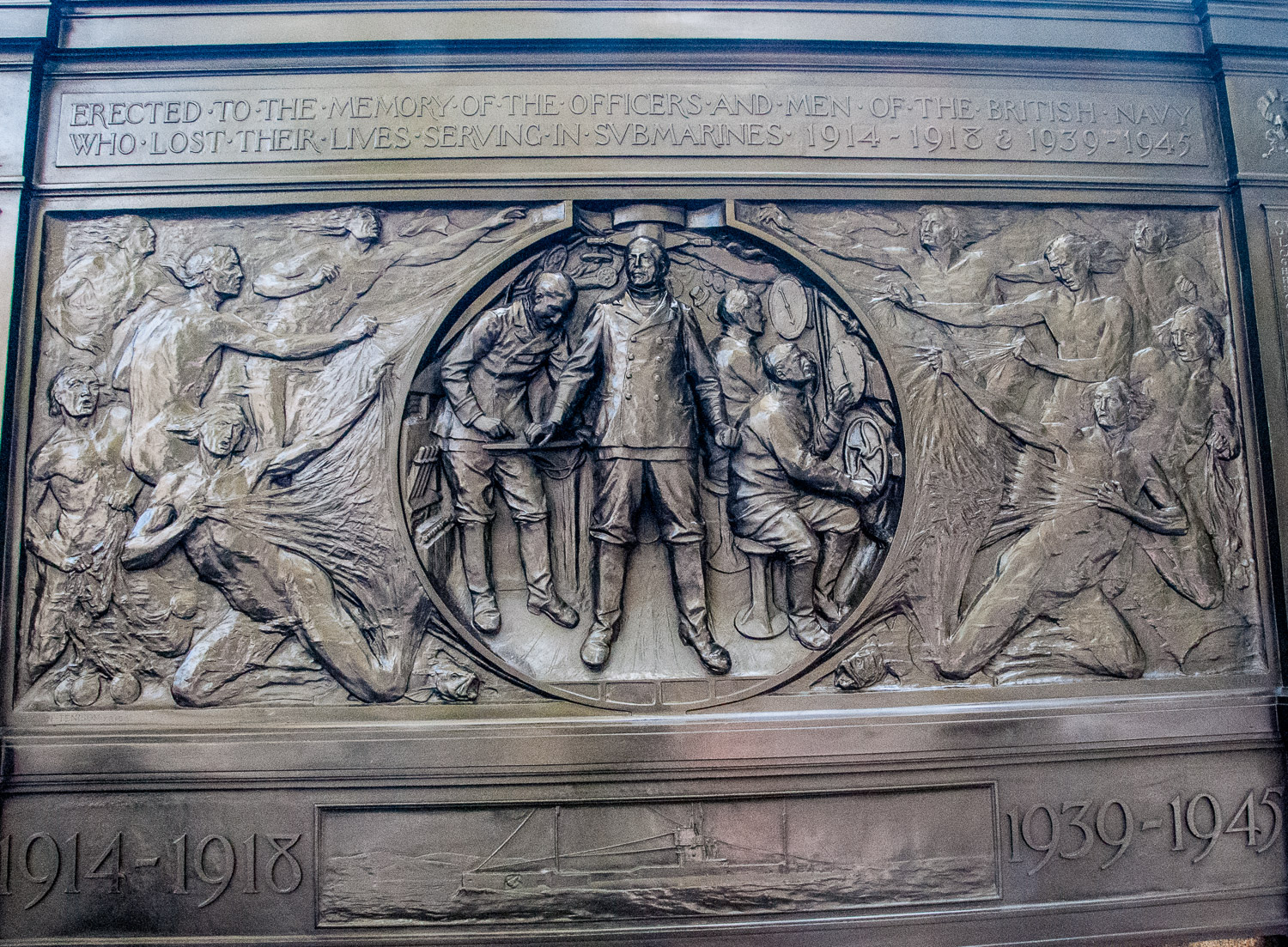
Sculptor: F B Hitch Architect: A H R Tenison Founder: E J Parlanti
The central figures recreate the scene set inside the submarine exaggerating it into a small, claustrophobic tunnel. The crew use charts and follow dials, the captain is braced at the centre with the periscope behind his head. Around the vessel a shallow relief depicts an array of sea creatures or mermen appearing to trap and haul the submarine in fishing nets, reminding us that the submarines were as much prey to the tempestuous elements as they were to the enemy.
On both corners are allegorical figures. Next to the list of vessels lost between 1914 and 1918, Truth holds up her mirror. Just further to the left in the picture are two of the 40 bronze wreath hooks in the form of anchors …
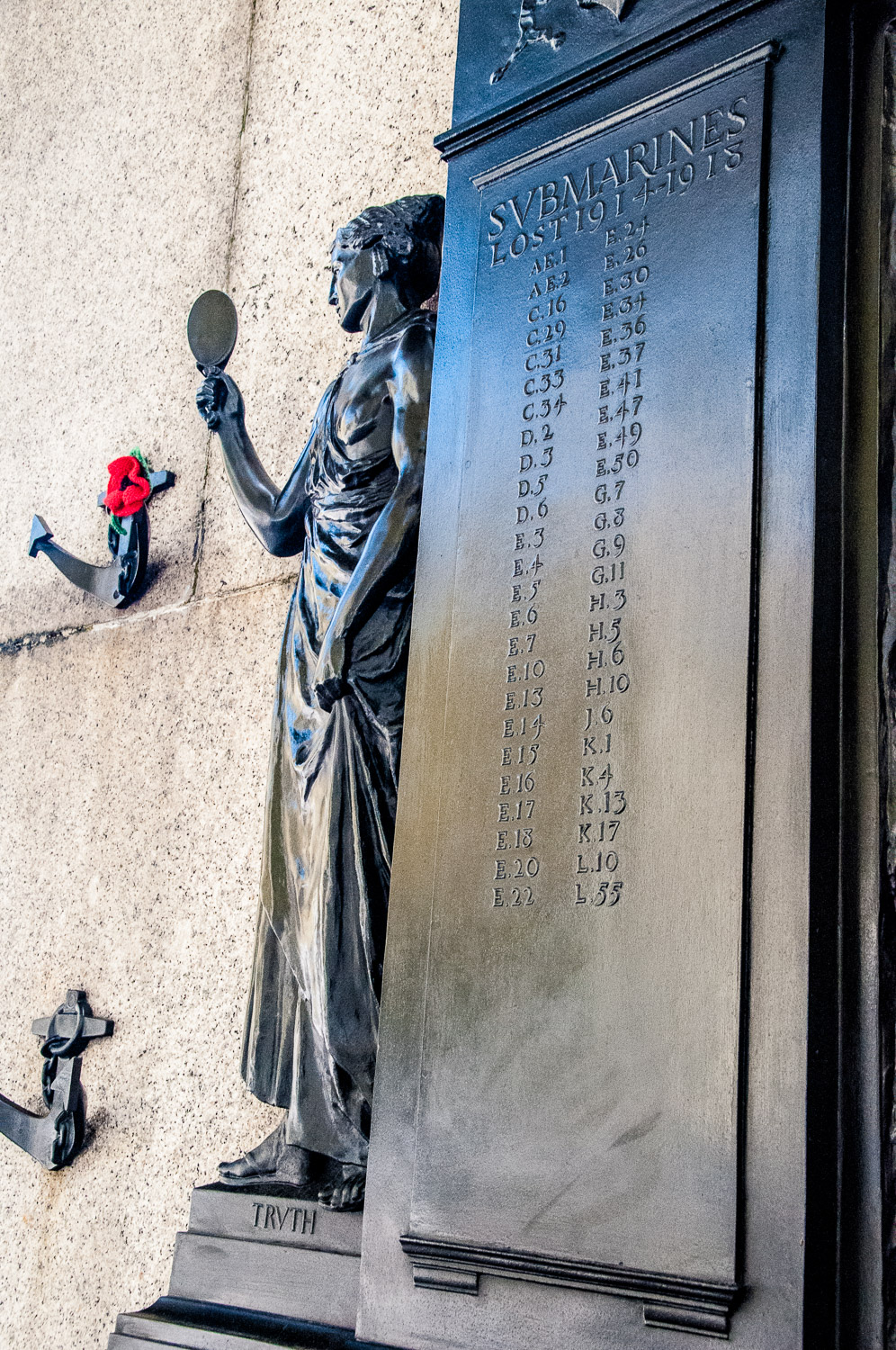
On the right, next to the vessels lost in the Second World War, Justice wears a blindfold and as usual holds a sword and scales …
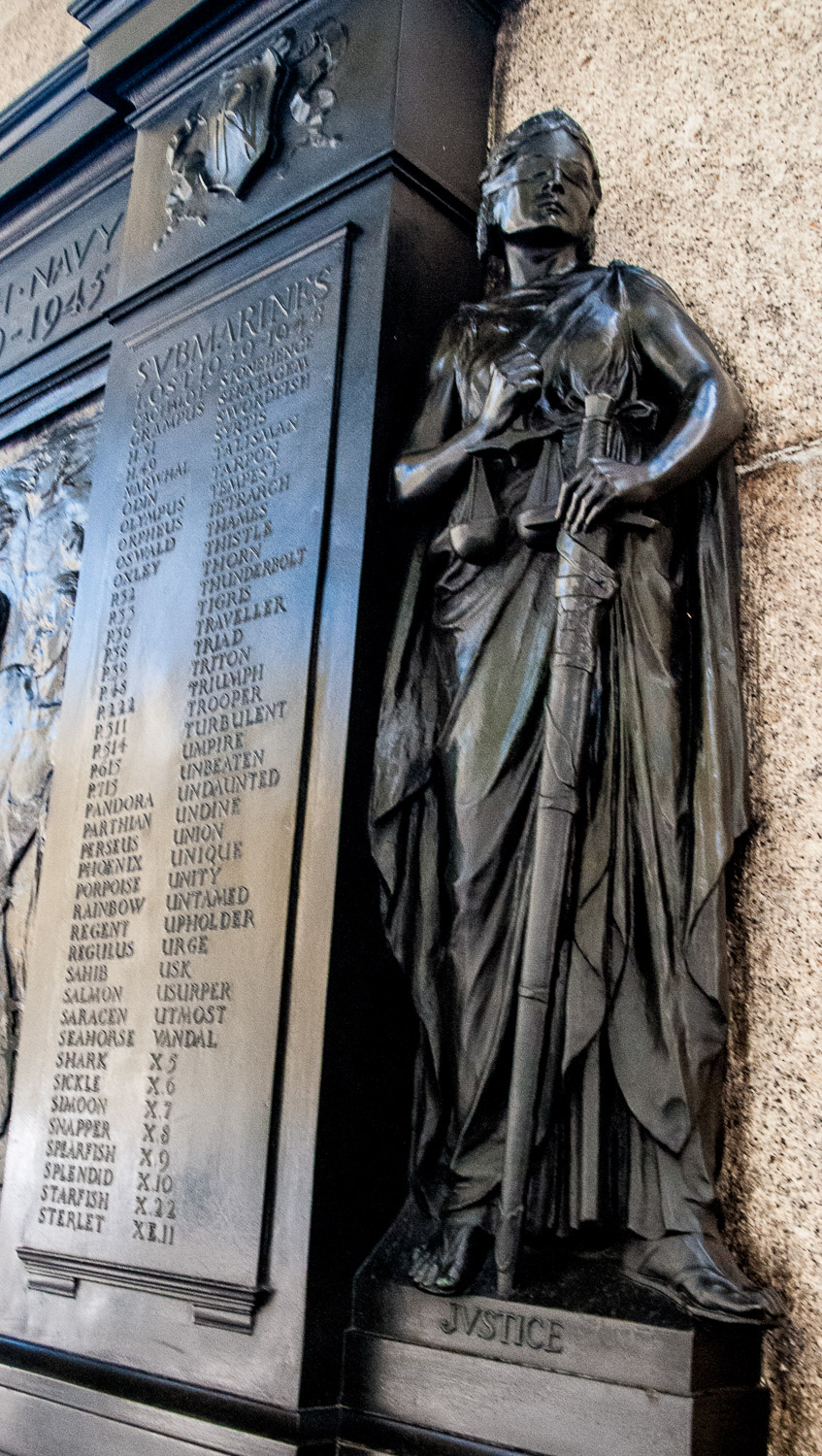
On a more lighthearted vein, walk east from the Memorial on the north side of the road and you’ll find this chap frantically trying to hail a taxi …
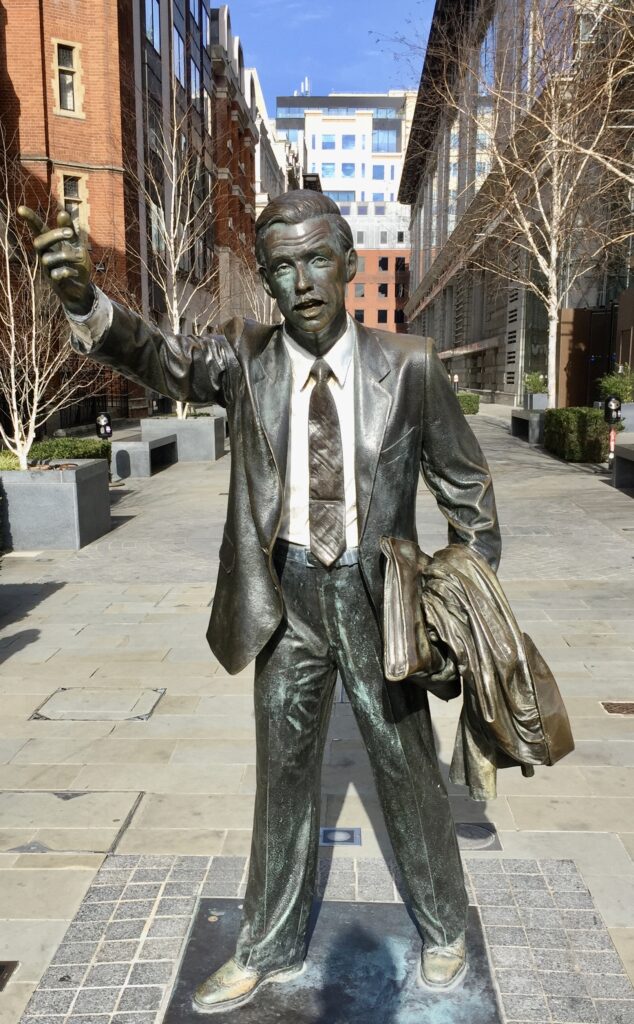
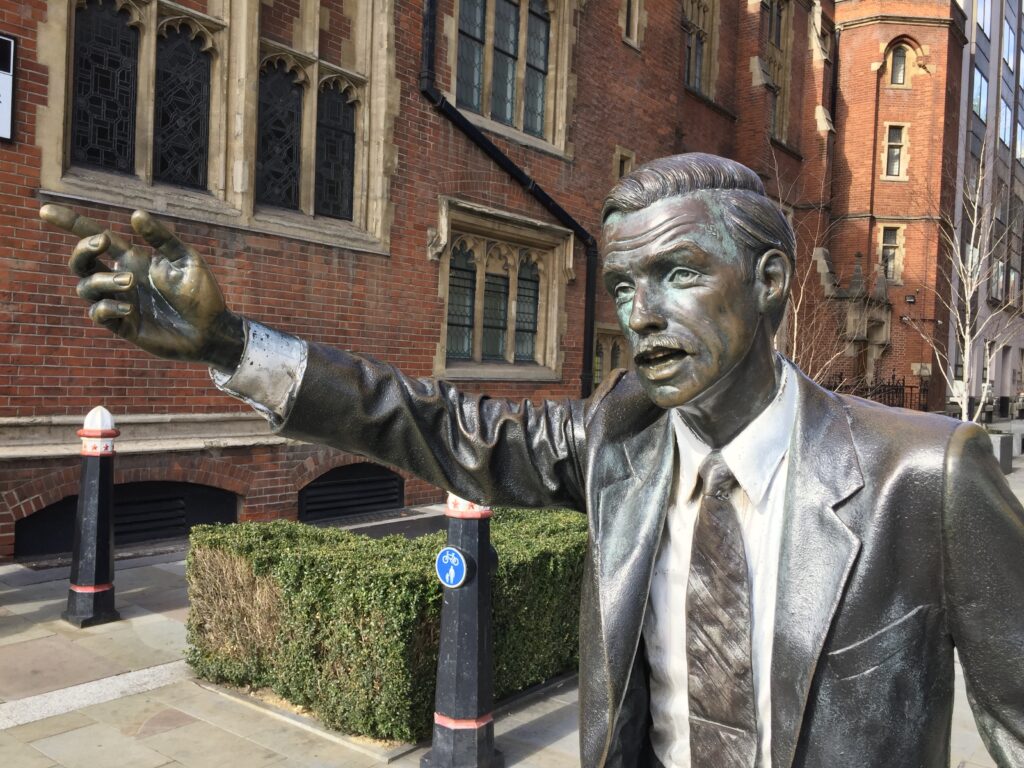
Taxi! by the American Sculptor J Seward Johnson is cast bronze and is now interestingly weathered. If you think the baggy trousers, moustache and side parting are erring on the retro, that’s because this particular office worker was transferred from New York in 2014. It was sculpted in 1983 and originally stood on Park Avenue and 47th Street.
I love this pair of ‘dolphin’ lamps (although they are actually sturgeon) ..
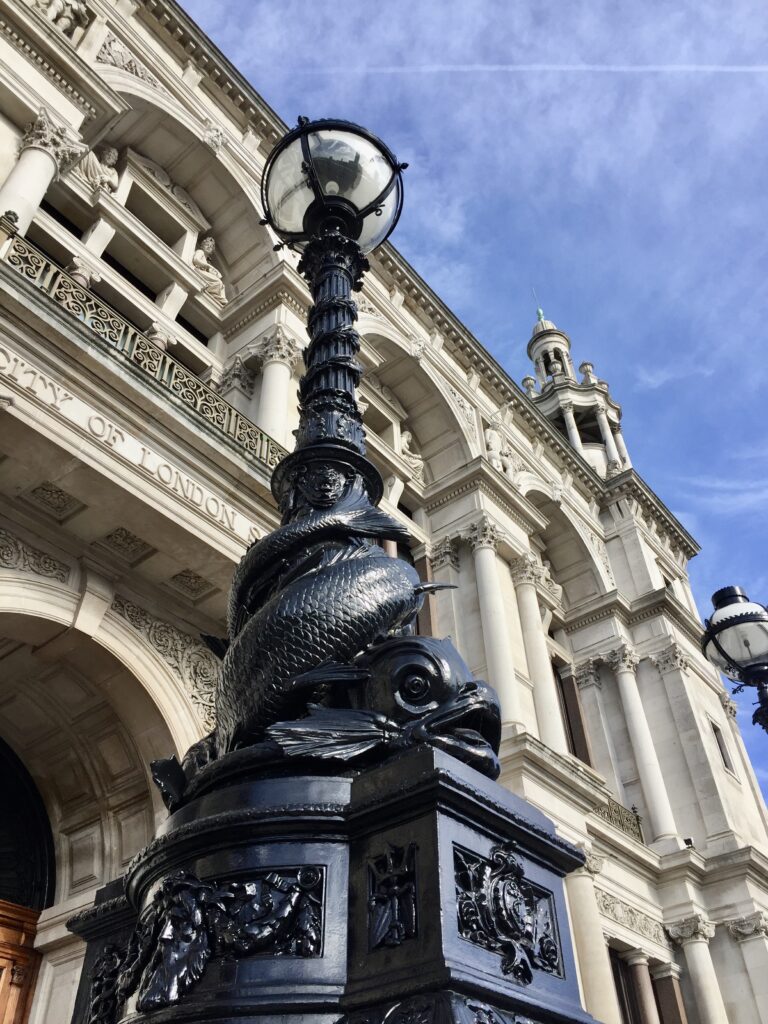
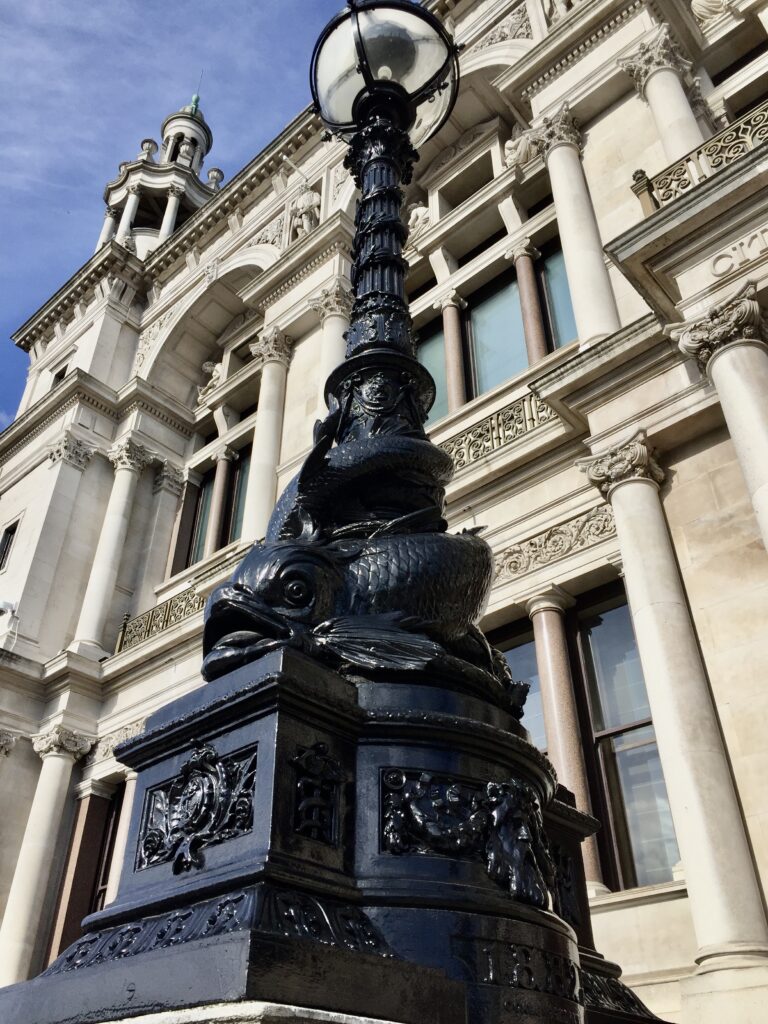
Neptune also makes an appearance …
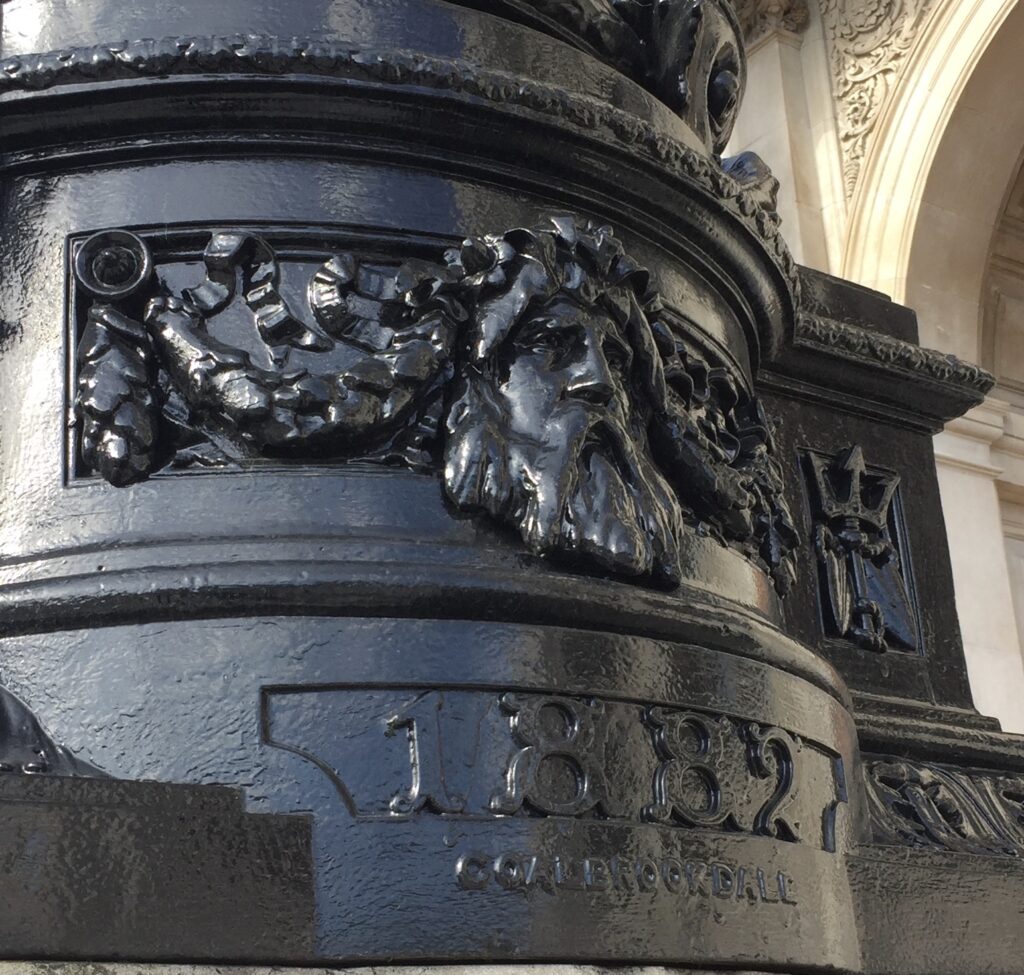
Further east you can wave to the pretty mermaid who embellishes the Art Deco style Unilever Building …
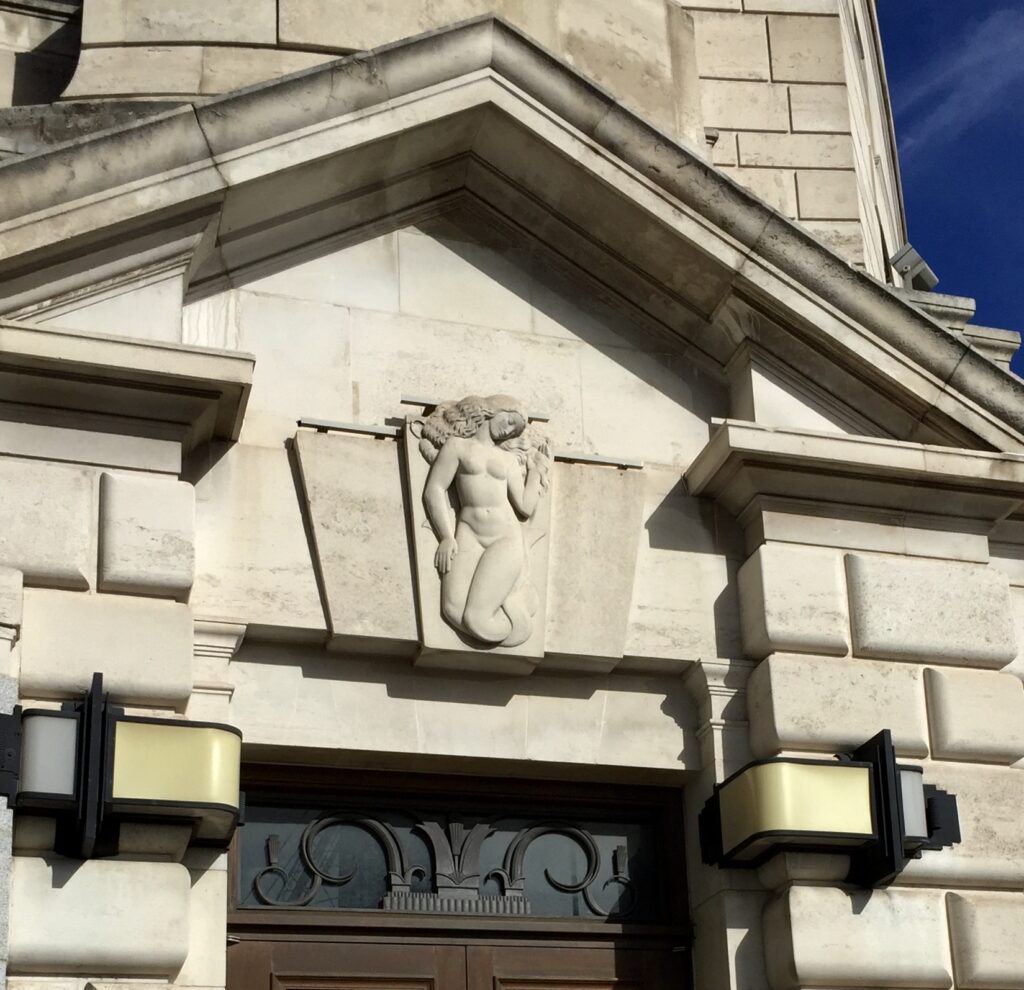
Further along the lamps repay detailed study …
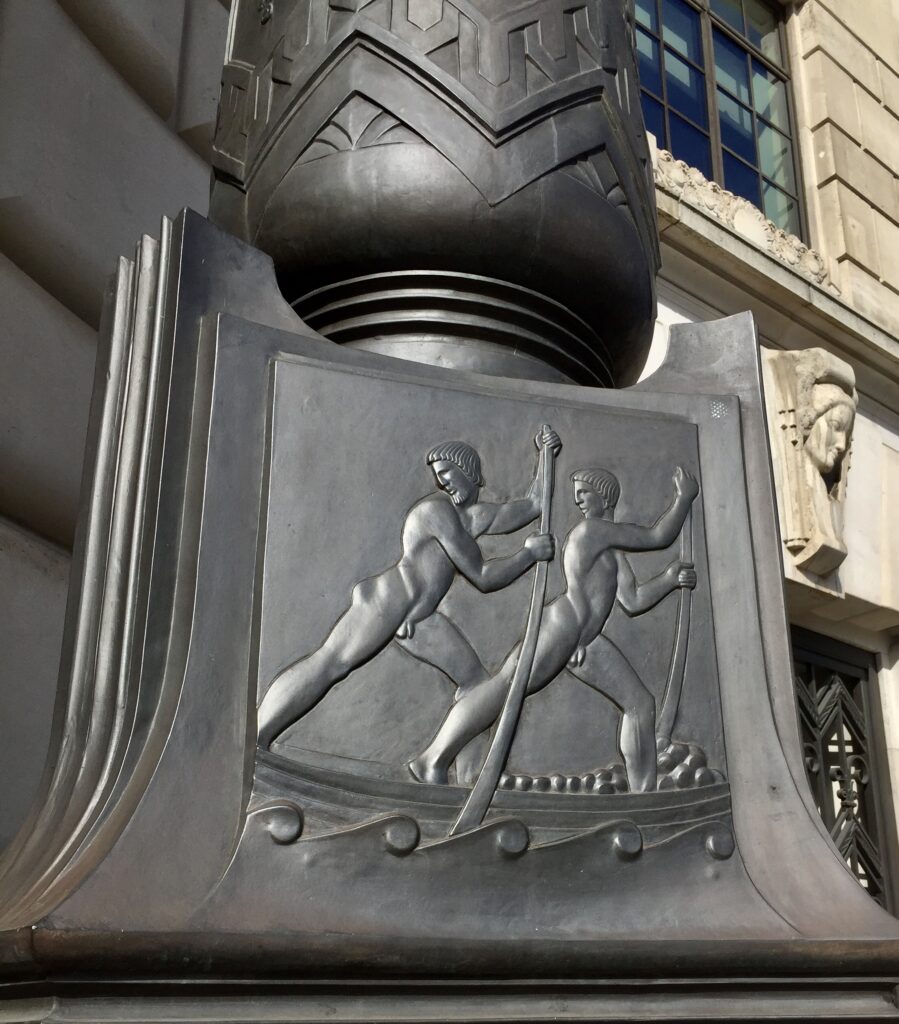
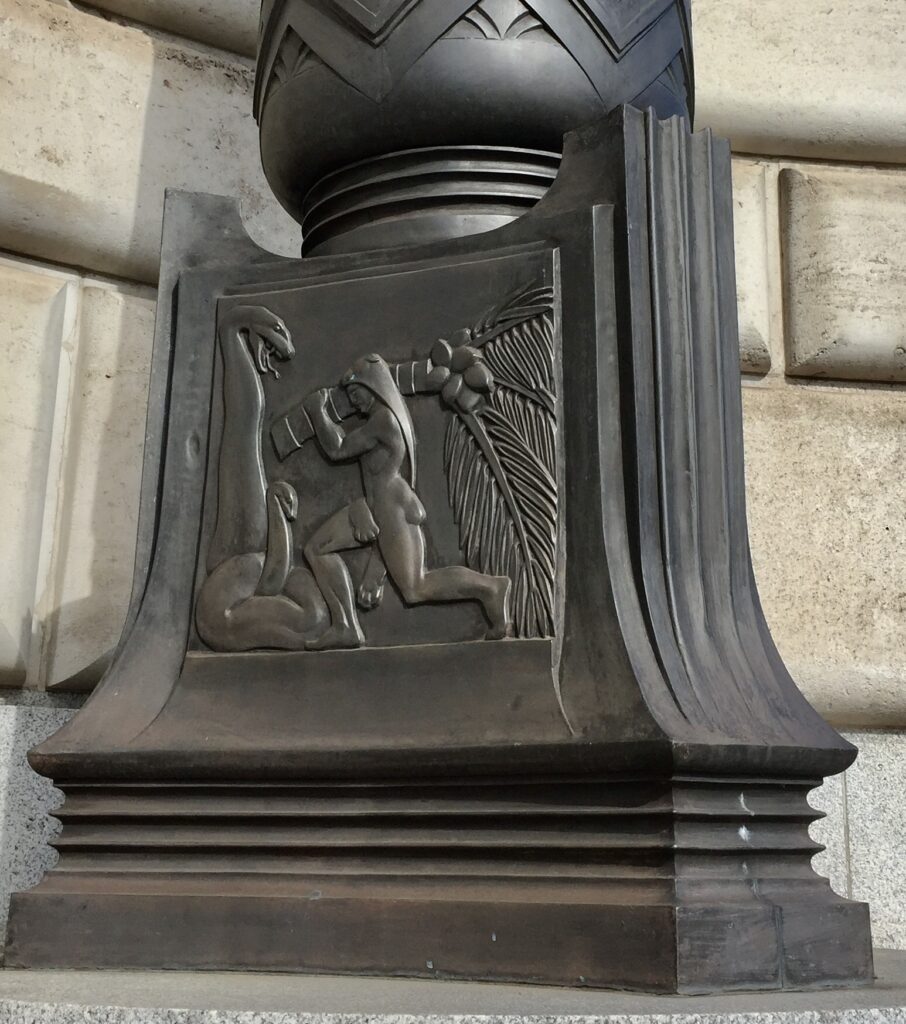
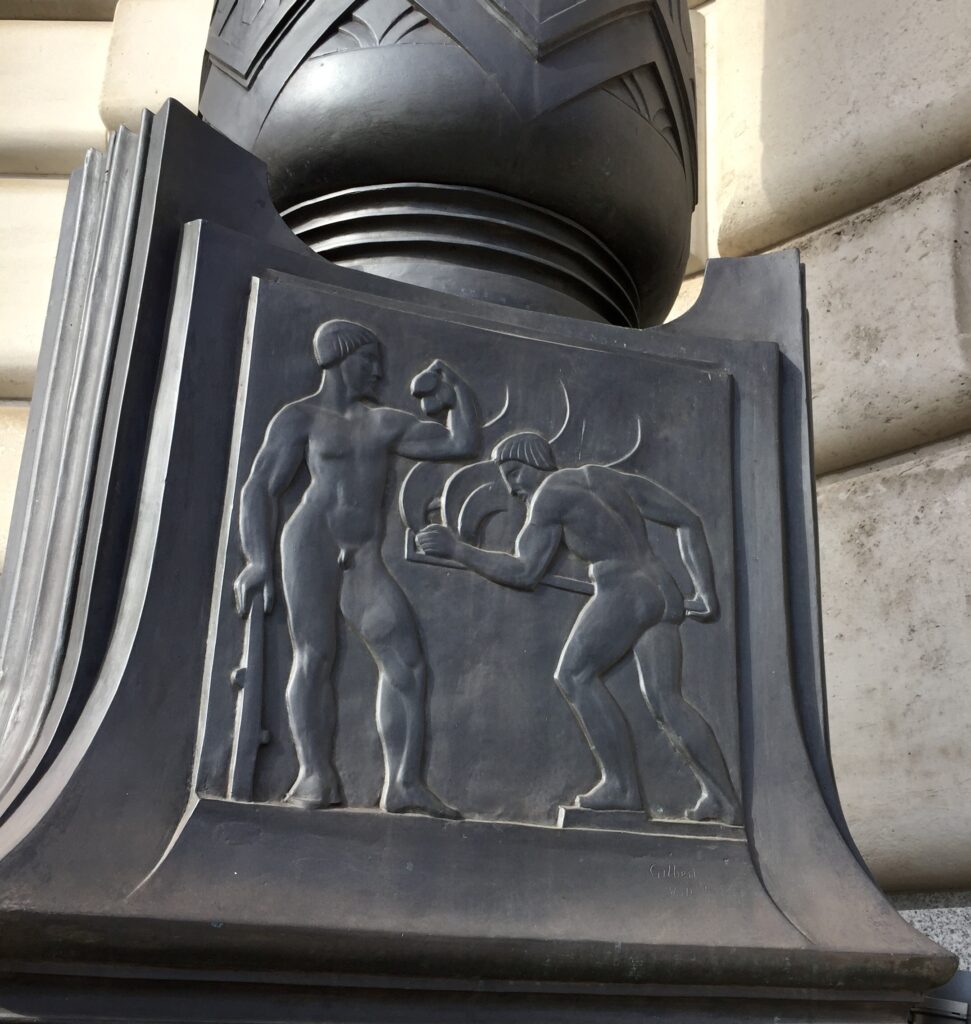
Across the road, a jolly friar looks down from the Blackfriar pub …
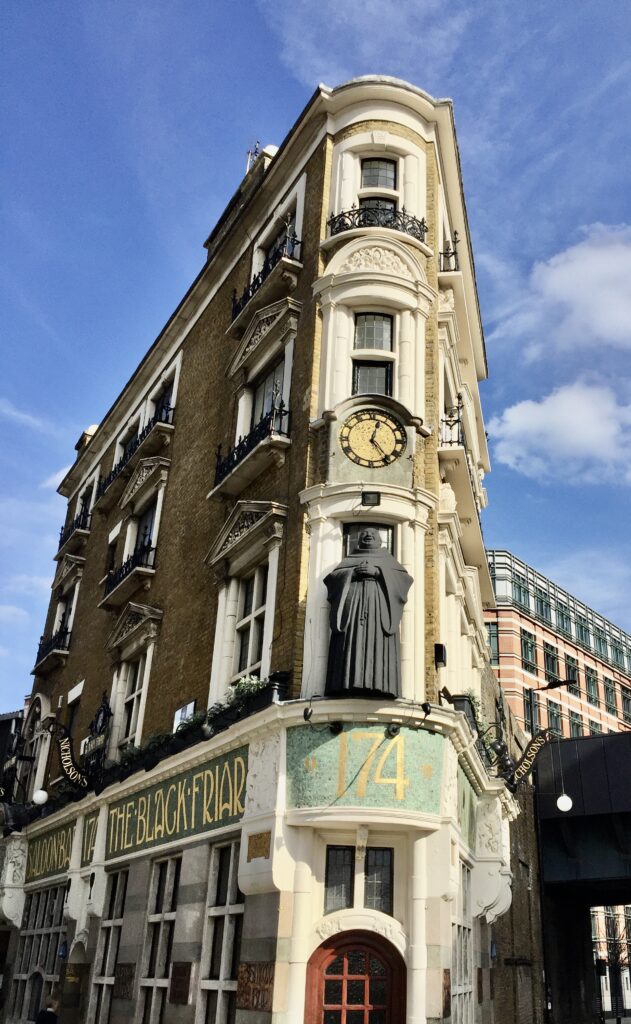
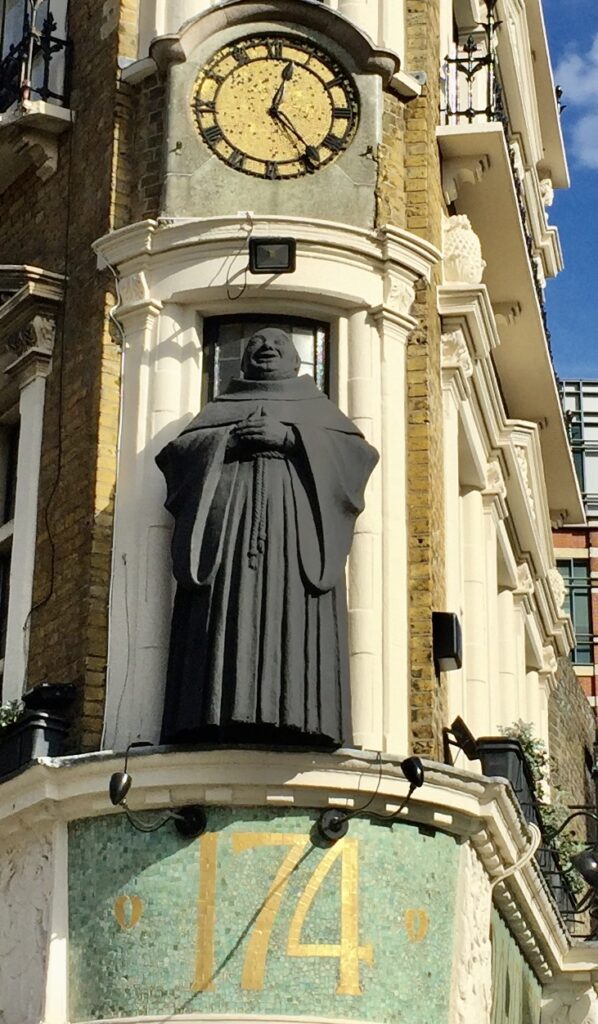
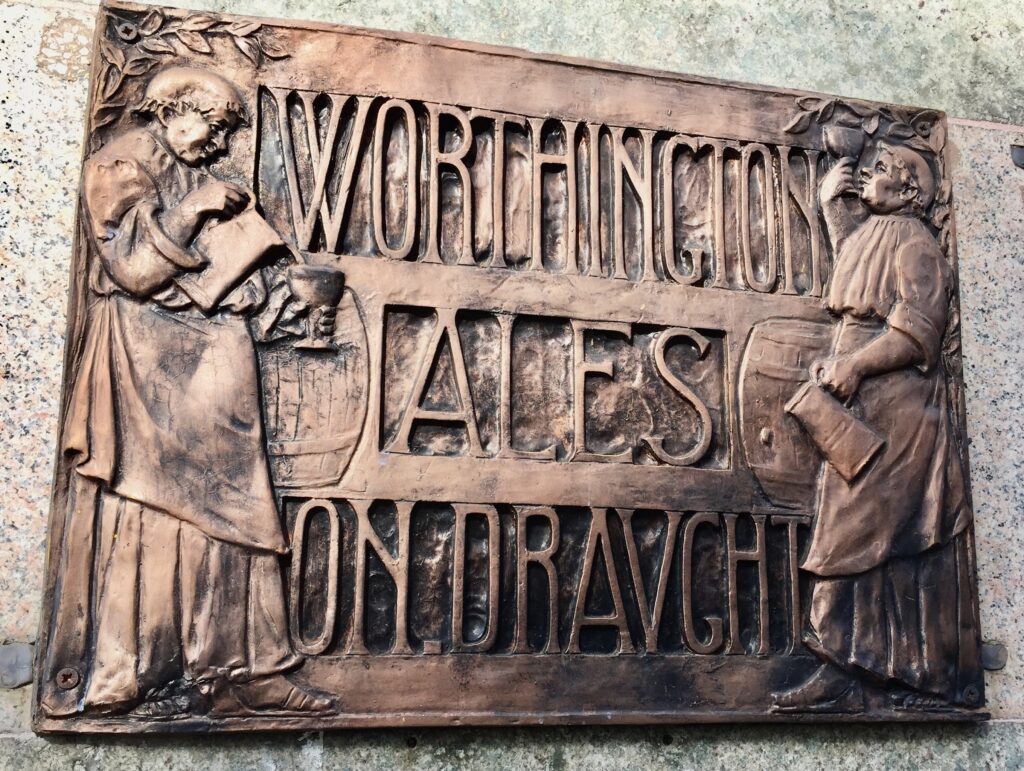
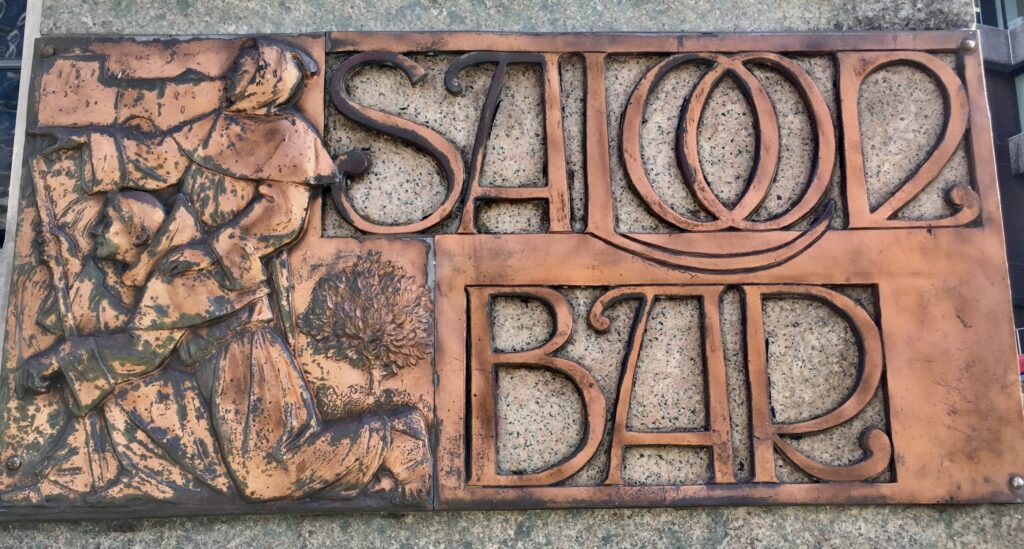
Carry on along Queen Victoria Street and admire the imposing College of Arms building …
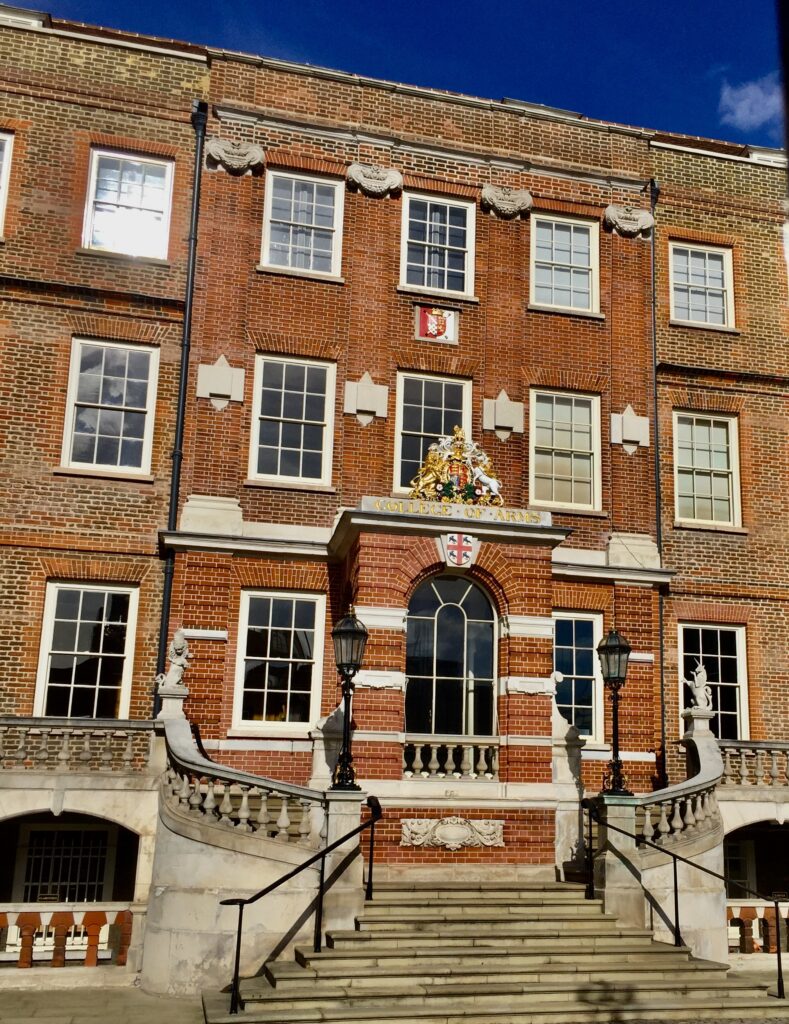
… and its ornate gate …
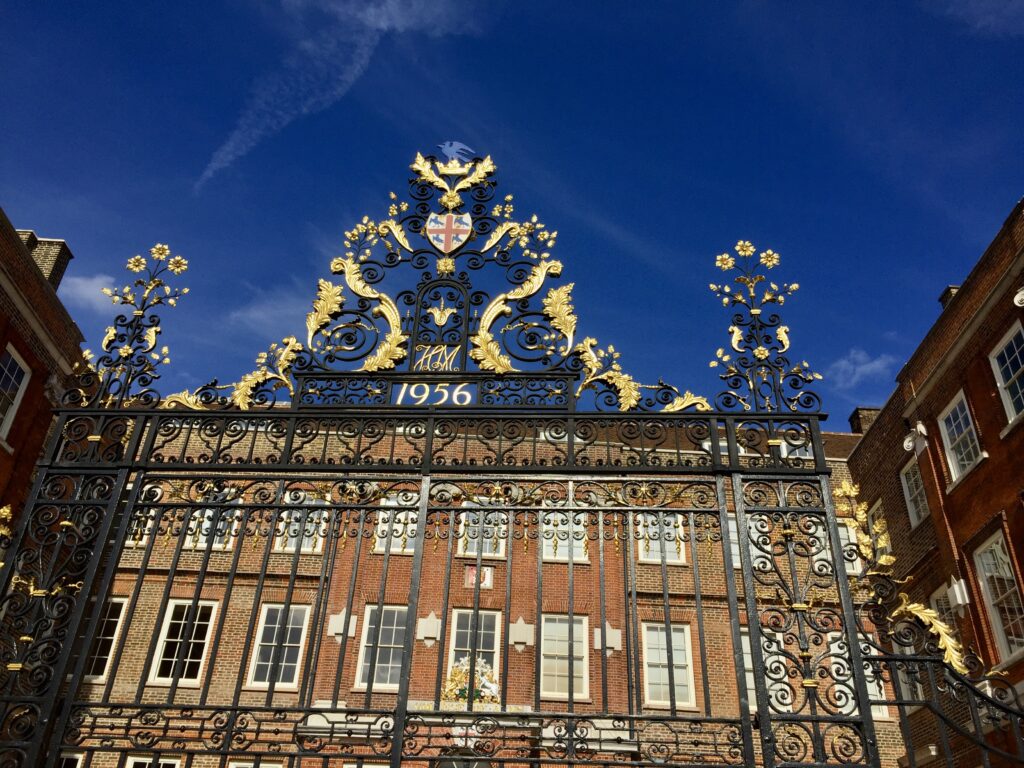
St Peter’s Hill runs north alongside the College and at the top you will find the Firefighters Memorial. On its octagonal bronze base are the names of the 997 men and women of the fire service who lost their lives during the conflict. The sculpture features two firemen ‘working a branch’, with their legs spread to take the strain of the hose …

A sub-officer directs others to assist. There are clues to the identity of this figure scattered among the debris at the figures’ feet: the letters CTD for C.T. Demarne. At the unveiling, his colleagues from the fire service claimed that there was no need for such clues. One who was interviewed by the Telegraph stated: ‘You can tell it’s Cyril by the way he’s standing…he always waved his arms about like that when he was ordering us about’.
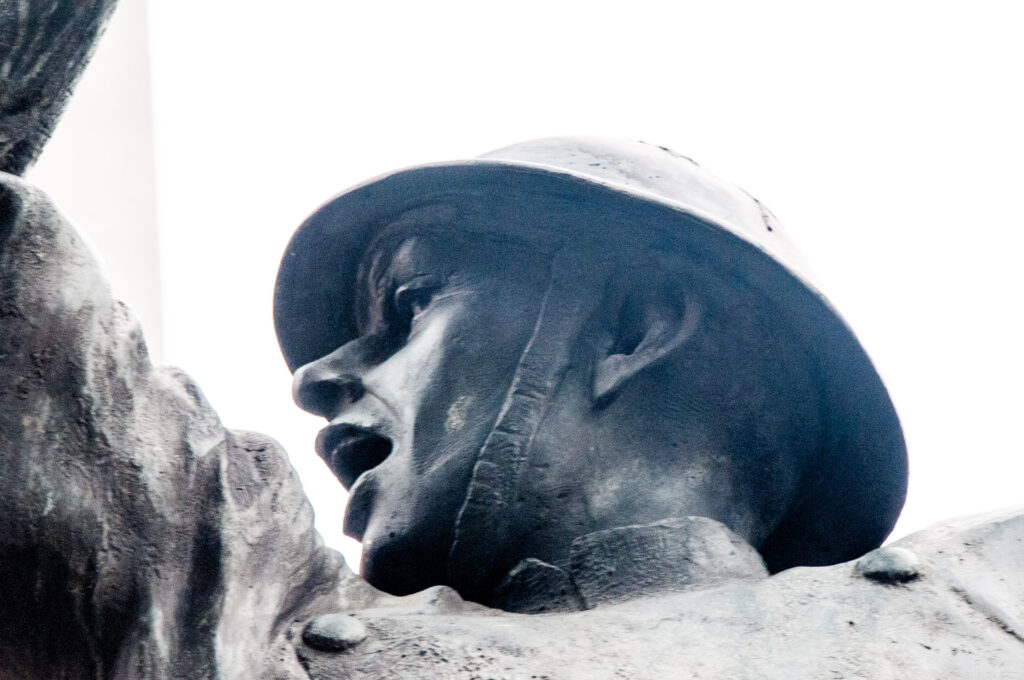
By 1943 over 70,00 women had enrolled in the National Fire Service in the United Kingdom. This memorial commemorates those who lost their lives in the London bombings …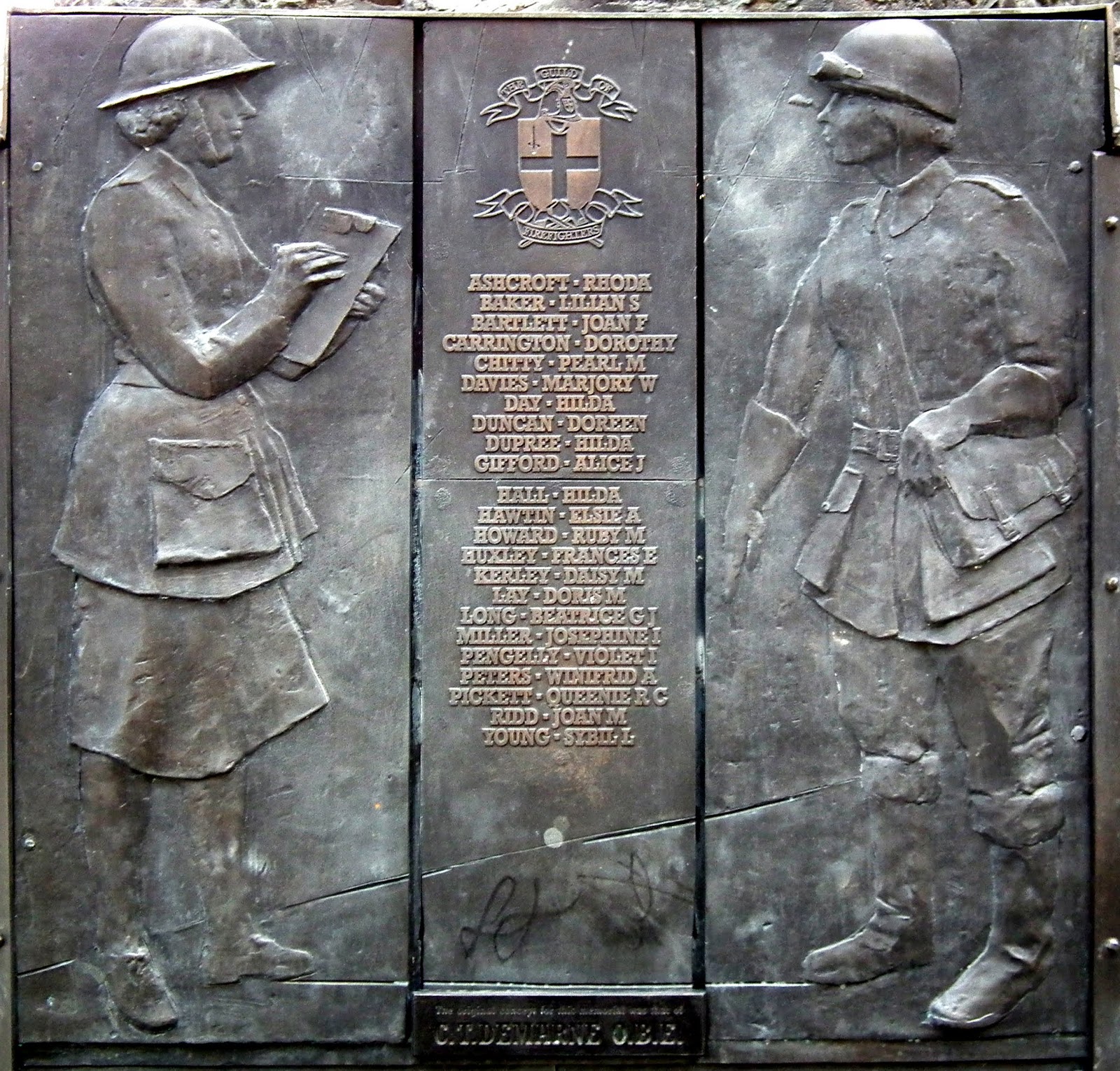
The lady on the left is an incident recorder and the one on the right a despatch rider.
Across the road, just south of the Cathedral, is this rather handsome bearded gentleman …
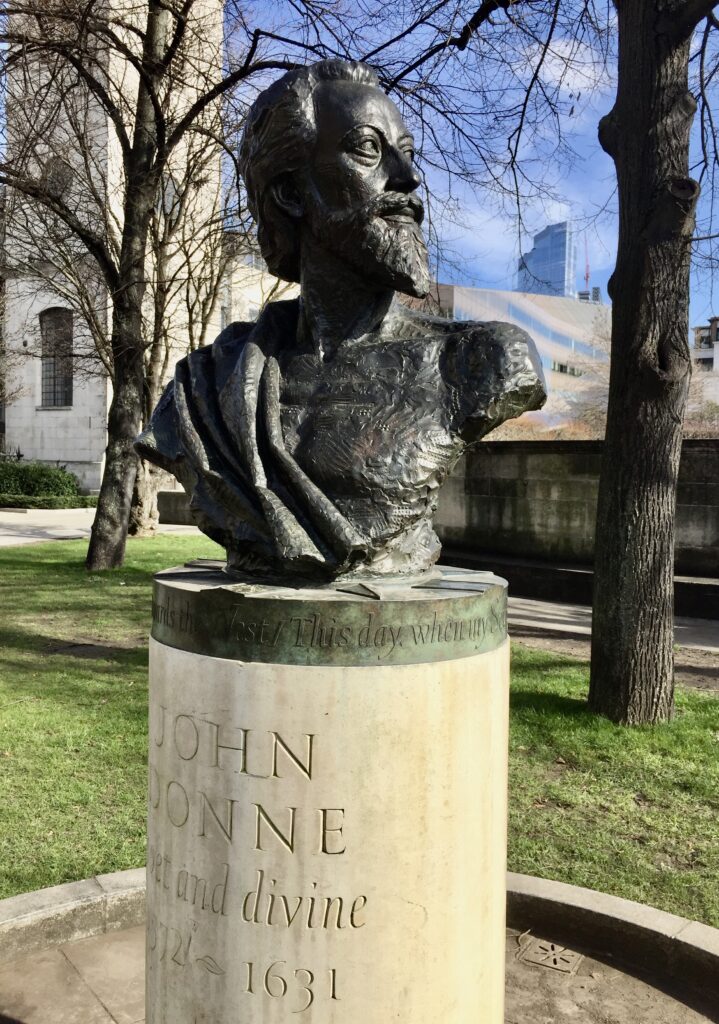
John Donne 1572-1631 by Nigel Boonham (2012).
In 1617, two years after his ordination, Donne’s wife died at age 33 after giving birth to a stillborn child, their twelfth. Grief-stricken at having lost his emotional anchor, Donne vowed never to marry again, even though he was left with the task of raising his ten surviving children in modest financial circumstances. His bereavement turned him fully to his vocation as an Anglican divine and, on November 22, 1621, Donne was installed as Dean of St. Paul’s Cathedral. The power and eloquence of his sermons soon secured for him a reputation as the foremost preacher in the England of his day, and he became a favourite of both Kings James I and Charles I.
His bust points almost due west but shows him turning to the east towards his birthplace on Bread Street. The directions of the compass were important to Donne in his metaphysical work: east is the Rising Sun, the Holy Land and Christ, while west is the place of decline and death. Underneath the bust are inscribed words from his poem Good Friday – Riding Westward :
Hence is’t that I am carried towards the west, This day when my soul’s form bends to the east
The most familiar quotation from Donne comes from his Meditation XVII – Devotions upon Emergent Occasions published in 1624:
‘No man is an island, entire of itself; every man is a piece of the continent, a part of the main … and therefore never send to know for whom the bell tolls, it tolls for thee.’
Incidentally, if you walk around the east side of the Cathedral you will see scars from the Second World War bombing which illustrate just how close the building came to destruction …
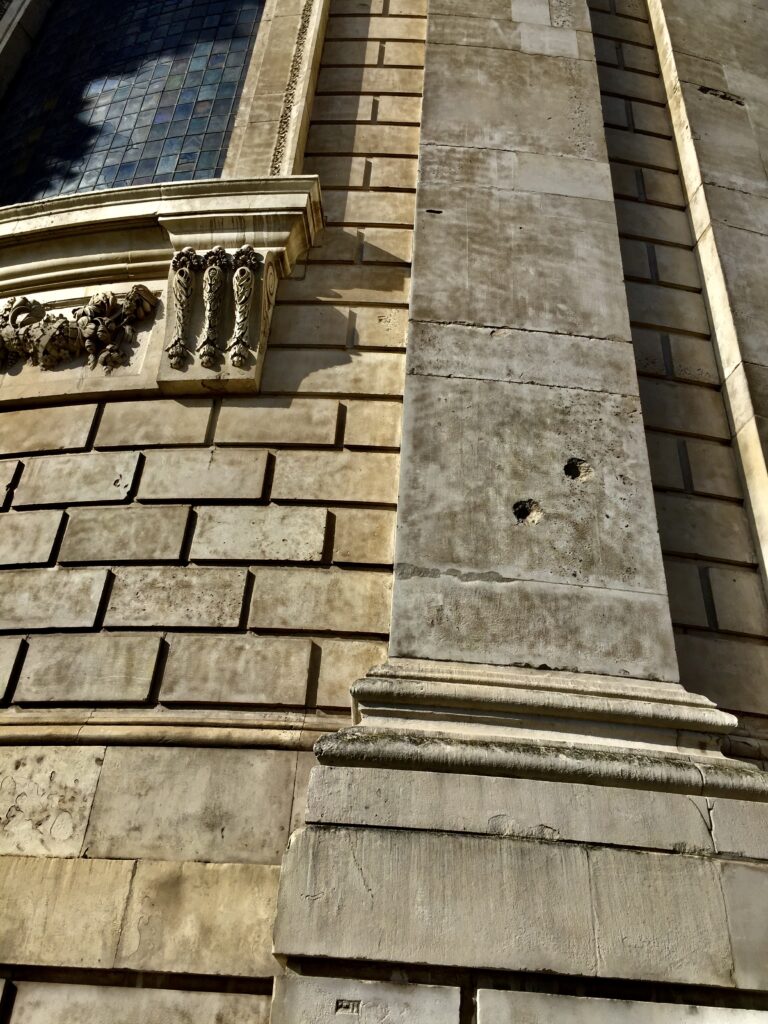
If you would like to follow me on Instagram here is the link …


